Themed collection Geological applications of laser ablation

Central science or central service—a personal view
Detlef Günther introduces the Geological applications of laser ablation themed issue.

J. Anal. At. Spectrom., 2014,29, 952-954
https://doi.org/10.1039/C4JA90018A
U–Pb dating of CA/non-CA treated zircons obtained by LA-ICP-MS and CA-TIMS techniques: impact for their geological interpretation
Chemical Abrasion Isotope-Dilution Thermal Ionization Mass Spectrometry (CA-ID-TIMS) is known as a high precision technique for resolving lead loss and improving the interpretation of U–Pb zircon age data.
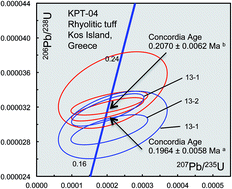
J. Anal. At. Spectrom., 2014,29, 1618-1629
https://doi.org/10.1039/C4JA00102H
Comparison of 795 nm and 265 nm femtosecond and 193 nm nanosecond laser ablation inductively coupled plasma mass spectrometry for the quantitative multi-element analysis of glass materials
A benchmark of FUV-ns- vs. NIR/MUV-fs-LA-ICPMS of glass materials concerning the accuracy of analysis is reported.
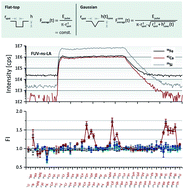
J. Anal. At. Spectrom., 2014,29, 1345-1353
https://doi.org/10.1039/C4JA00030G
Development and characterization of custom-engineered and compacted nanoparticles as calibration materials for quantification using LA-ICP-MS
Flame spray synthesis was used to produce a reference nano-material with a customized composition for use in LA-ICP-MS.
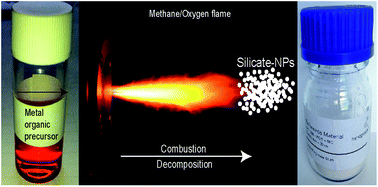
J. Anal. At. Spectrom., 2014,29, 955-962
https://doi.org/10.1039/C4JA00054D
Evaluation of pneumatic nebulization and ns-laser ablation ICP-MS for bulk elemental analysis and 2-dimensional element mapping of iron meteorites
In this work, the capabilities and limitations of ns-LA-ICP-MS for bulk and spatially resolved (elemental mapping) analysis of iron meteorites were assessed.
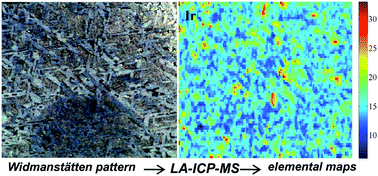
J. Anal. At. Spectrom., 2014,29, 1001-1016
https://doi.org/10.1039/C3JA50387A
Nano-particulate pressed powder tablets for LA-ICP-MS
A new method produces undiluted pressed powder tablets for LA-ICP-MS opening prospects for manufacturing mineral standards for isotopic and geochemical analysis.
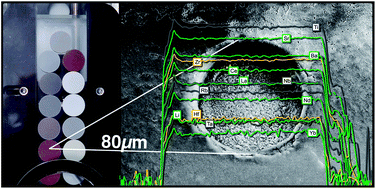
J. Anal. At. Spectrom., 2014,29, 990-1000
https://doi.org/10.1039/C4JA00007B
LA-ICP-MS Pb–U dating of young zircons from the Kos–Nisyros volcanic centre, SE Aegean arc
Dating of zircons in the 100 ka range is possible with LA-ICP-MS applying Th-disequilibrium correction.
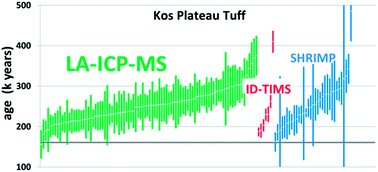
J. Anal. At. Spectrom., 2014,29, 963-970
https://doi.org/10.1039/C4JA00009A
Optimisation of laser parameters for the analysis of sulphur isotopes in sulphide minerals by laser ablation ICP-MS
The effects of laser type (Nd:YAG and excimer lasers) and their analytical parameters on 34S/32S isotopic fractionation during LA-ICP-MS analysis were investigated.
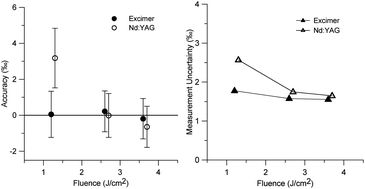
J. Anal. At. Spectrom., 2014,29, 1042-1051
https://doi.org/10.1039/C4JA00011K
Fractionation of sulphur relative to iron during laser ablation-ICP-MS analyses of sulphide minerals: implications for quantification
In this study we investigate the effect that the mineral composition has on the quantification of sulphur by Laser Ablation ICP-MS (LA-ICP-MS) between a range of sulphide minerals: pyrite, pyrrhotite, bornite, chalcopyrite, sphalerite, pentlandite and tetrahedrite.
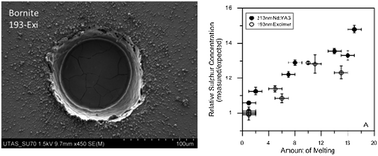
J. Anal. At. Spectrom., 2014,29, 1024-1033
https://doi.org/10.1039/C4JA00012A
What happens when n= 1000? Creating large-n geochronological datasets with LA-ICP-MS for geologic investigations
LA-MC-ICP-MS and LA-SC-ICP-MS were used to generate large n (i.e., n = 1000) U–Pb detrital zircon age data sets with little sacrifice of precision and accuracy over more traditional methods.

J. Anal. At. Spectrom., 2014,29, 971-980
https://doi.org/10.1039/C4JA00024B
In situ U–Pb dating of bastnaesite by LA-ICP-MS
Bastnaesite, a common accessory mineral in REE ore deposits, is ideal for U–Pb isotopic dating because of its relatively high U and Th contents.
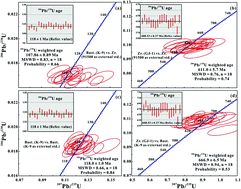
J. Anal. At. Spectrom., 2014,29, 1017-1023
https://doi.org/10.1039/C4JA00001C
The zircon ‘matrix effect’: evidence for an ablation rate control on the accuracy of U–Pb age determinations by LA-ICP-MS
This papers describes the source of systematic bias in U–Pb zircon dating by LA-ICP-MS.
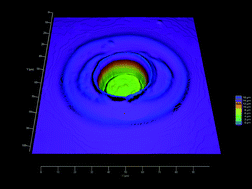
J. Anal. At. Spectrom., 2014,29, 981-989
https://doi.org/10.1039/C4JA00008K
Quantification of trace element contents in frozen fluid inclusions by UV-fs-LA-ICP-MS analysis
Gain in control and reliability for trace element analysis of fluid inclusions by the application of a new procedure.
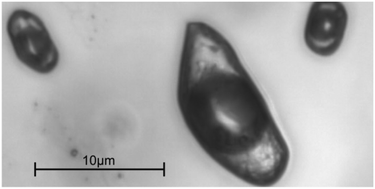
J. Anal. At. Spectrom., 2014,29, 1034-1041
https://doi.org/10.1039/C4JA00015C
Fluid inclusion measurements by laser ablation sector-field ICP-MS
The performance of a sector field ICP-MS in comparison with a quadrupole ICP-MS for fluid inclusion analysis has been evaluated.
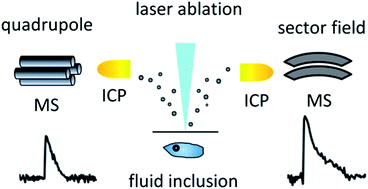
J. Anal. At. Spectrom., 2014,29, 1052-1057
https://doi.org/10.1039/C4JA00010B
About this collection
This collection of papers highlights the field of geological applications of laser ablation, covering a mixture of both fundamental advances and exciting new applications.